If MarketMuse isn’t the perfect fit for your team, you’ve got plenty of practical options. This guide keeps things simple and action-oriented, so you can pick a tool, test it quickly, and keep publishing without slowing down.
You’ll get clear recommendations: Surfer and Clearscope for clean, in-editor guidance (see top content optimization software for how these compare in practice); Frase for speedy AI-assisted outlines (see best Jasper alternatives for adjacent AI-writing tradeoffs); Outranking and Content Harmony for standardized briefs across multi-writer teams; Dashword and NeuronWriter for budget-friendly optimization (pair with best free SEO tools to stretch budgets); INK for writing + SEO in one place; and Semrush/Ahrefs if you want an all-in-one SEO backbone.
We’ll help you choose by situation “solo, in-house, or agency” and by what actually moves the needle: brief quality, real-time scoring, audits/refresh, and Google Docs/WordPress integrations that cut friction. You’ll also find a scannable comparison table, simple pricing cues, and a 30-day pilot plan so you can test with minimal effort and make a confident decision, use an SEO rank tracking software comparison to monitor early winners.
👉 Skim, shortlist, and test. By the end, you’ll know which tool fits your stack and cadence, and how to switch without losing momentum.
▶️ Book a 10-min tool fit check → Calendly
Table of Contents
The Top MarketMuse Alternatives For 2025
Below are the best MarketMuse alternatives you should consider:
| Tool | Best for | key features |
|---|---|---|
| MarketMuse | Content teams that want deep topic research | Topic modeling to find gaps; Content briefs with suggested headings; Optimization score to guide improvements |
| Surfer | Fast, consistent on-page optimization | Real-time content score while writing; Easy Google Docs/WordPress workflow; Content audit to refresh older posts |
| Clearscope | In-house teams that want a simple editor | Clear term recommendations; Easy A–F style content grade; Minimal learning curve for writers |
| Frase | Quick AI-assisted outlines and briefs | SERP overview to see what ranks; AI outline/brief builder; In-editor optimization suggestions |
| Outranking | Agencies needing repeatable workflows | Step-by-step “from brief to publish” process; Checklist-style guidance for writers; AI help at each stage |
| Content Harmony | Teams that live on strong content briefs | Structured, easy-to-follow briefs; Collaboration and reviewer notes; Competitive insights for angle and questions |
| Dashword | Solo marketers/startups on a budget | Simple editor with suggestions; Content scoring to stay on track; Lightweight setup—start fast |
| NeuronWriter | Value seekers who want SERP-guided writing | Competitor/SERP analysis; In-editor topic suggestions; Helpful for outlines and drafts |
| INK | One-tool drafting + optimization | AI writing assistance; SEO guidance in the same editor; Goals to align content with intent |
| Semrush | All-in-one SEO plus content help | Keyword research + technical SEO; Content templates/SEO writing assistant; Site audits & tracking |
| Ahrefs | Research-heavy SEO with content add-ons | Best-in-class backlink/keyword data; Content Explorer for topic ideas; Basic content optimization tools |
1. Is Surfer a Good Alternative to MarketMuse?
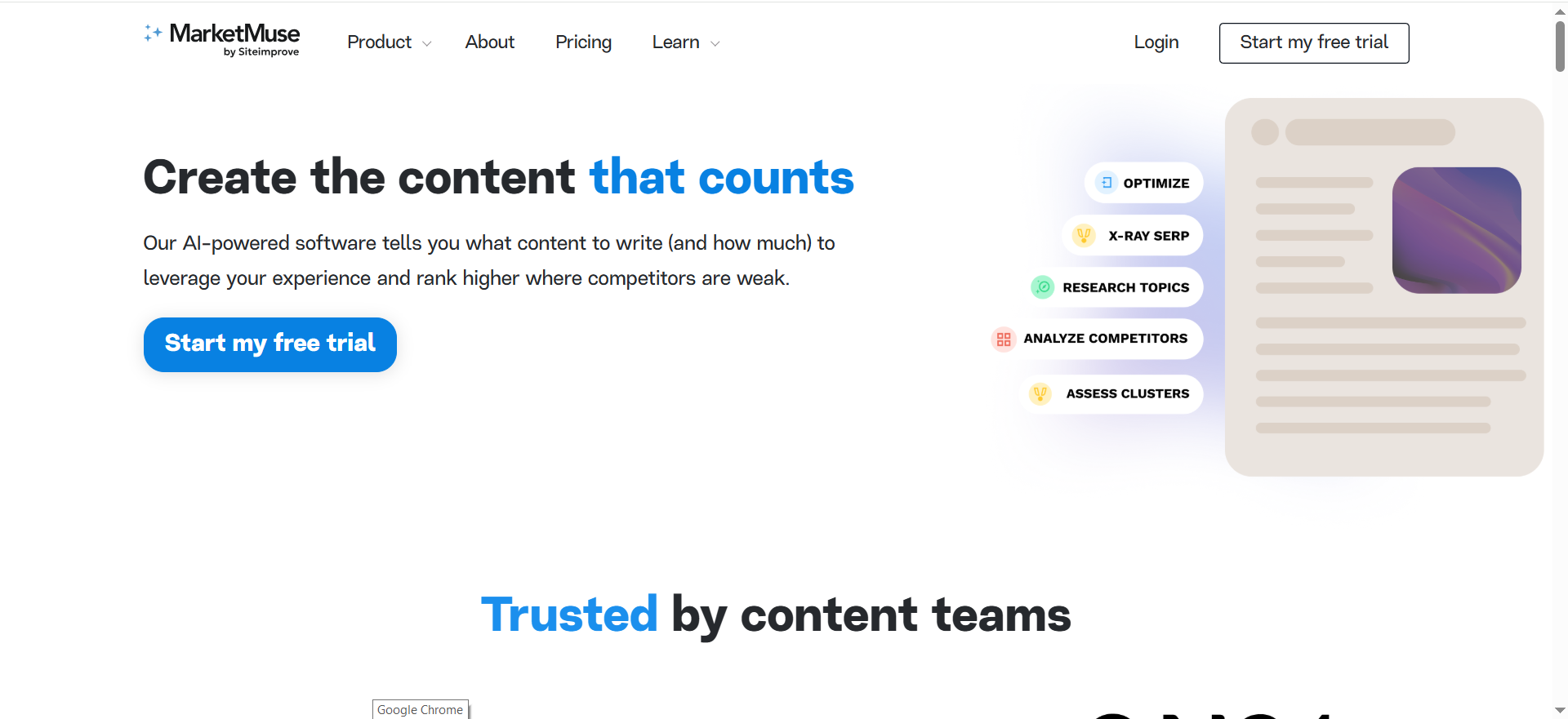
Surfer is a popular MarketMuse alternative if you want clear, in-editor guidance while writing. Its real-time content score nudges you toward better headings, terms, and length without feeling overly technical.
Teams like it because writers can open a brief, draft in the editor (or Google Docs/WordPress via integrations), and watch the score improve as they write. Surfer is strongest when your goal is publish velocity and consistent on-page quality across many articles.
Keep in mind that some advanced strategy features (e.g., big-picture topic modeling) may feel lighter than MarketMuse. If you’re a small team or an agency with multiple writers, Surfer hits the “simple + scalable” sweet spot.
When to pick: You need live optimization and fast onboarding.
Keep in mind: Credit/seat models can affect costs as you scale.
Mini verdict: A practical, “get-it-done” optimizer for teams.
The Rank Masters - SaaS Content…
2. Is Clearscope Easier Than MarketMuse?
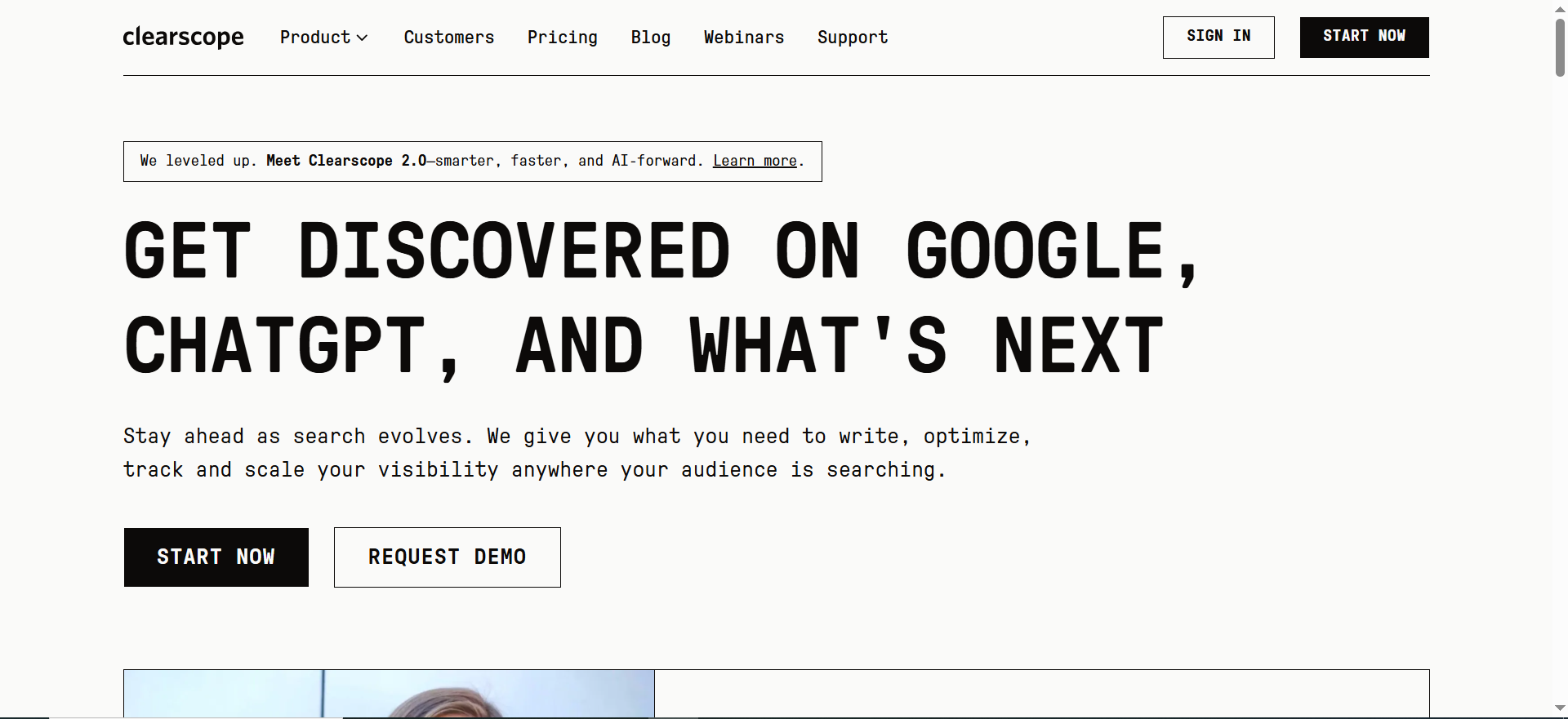
Clearscope focuses on ease of use and a clean writing experience. If MarketMuse ever felt heavy, Clearscope’s editor keeps things simple: recommended terms, headings, and an overall content grade that’s easy to follow.
It’s a solid fit for in-house SaaS teams that want less tool overhead and more consistent briefs for writers. Editors appreciate that the grading logic aligns well with what shows in SERPs, and the UI helps non-technical stakeholders understand “what good looks like.”
Compared to MarketMuse, Clearscope usually wins on clarity and day-1 adoption, though it may offer fewer deep strategy features in exchange.
When to pick: You want clarity, adoption, and consistent output across multiple writers.
Keep in mind: Premium tiers can be pricier.
Mini verdict: A friction-light path to better content quality.
3. Is Frase Better if I Want AI Briefs and Outlines?
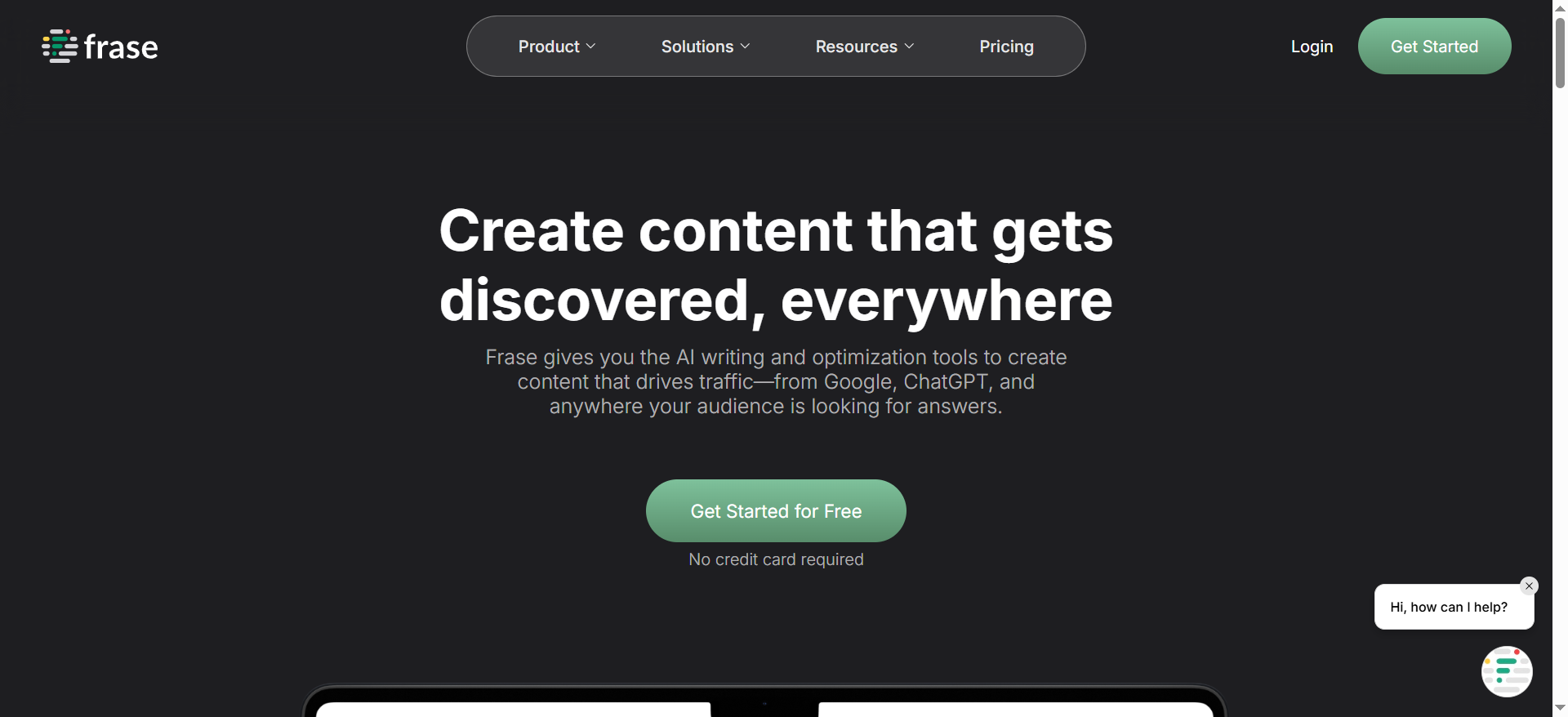
Frase blends SERP research with AI-assisted outlines and briefs, which helps teams move from idea → draft quickly. If you need to spin up a brief, see what the top results cover, and produce a first pass outline in minutes, Frase is compelling.
Editors like that it supports a guided writing flow: start with a SERP scan, generate an outline, then refine with optimization suggestions. Against MarketMuse, Frase can feel lighter and faster for early-stage briefs, especially for teams that value AI to break the blank page.
When to pick: You want AI-assisted briefs that are easy to tweak.
Keep in mind: Always fact-check AI suggestions and add your POV.
Mini verdict: A helpful “from scratch to outline” accelerator.
4. When Does Outranking Make More Sense?
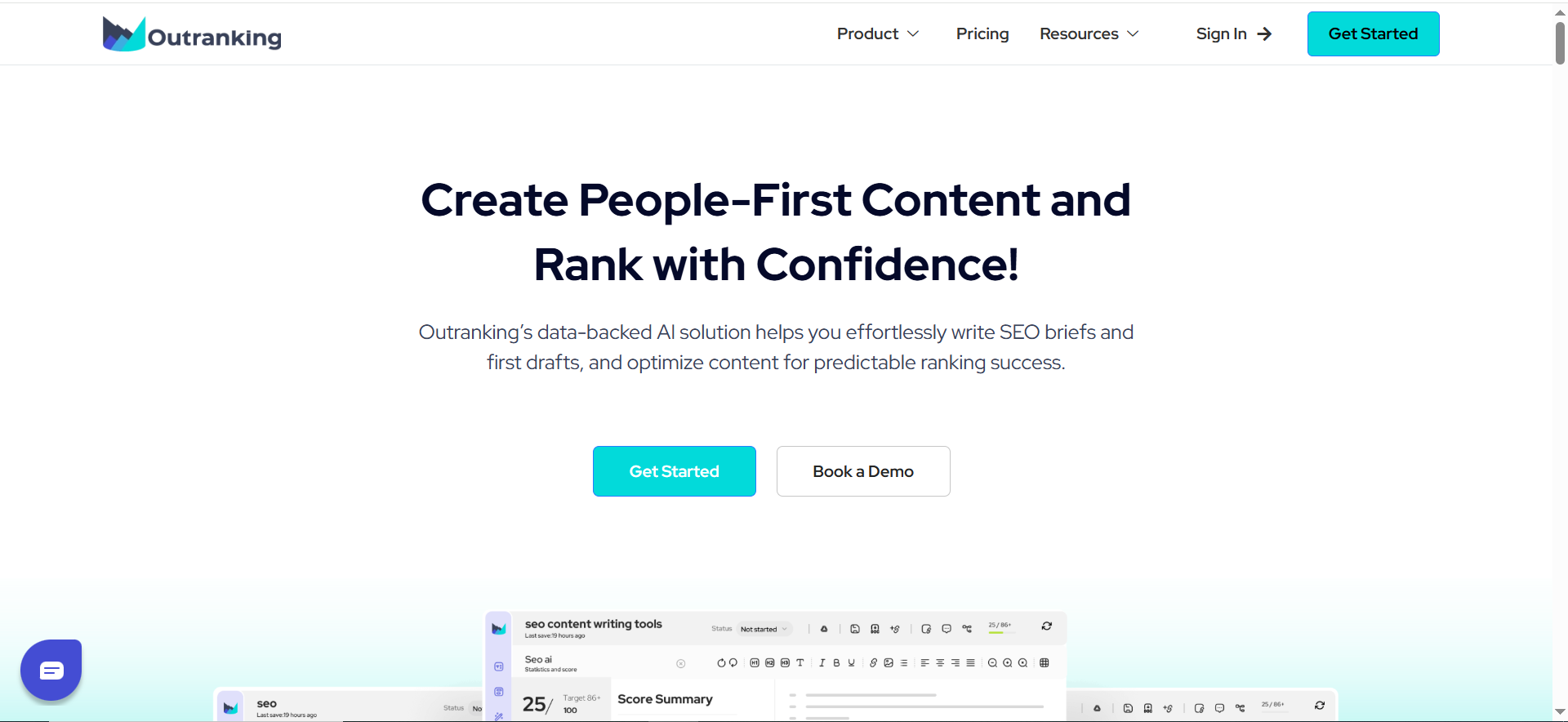
Outranking is geared toward teams that want step-by-step guidance from research through optimization. Think structured workflows: outline, draft, optimize, and check off tasks as you go. Agencies often like this because it standardizes how multiple writers approach each article, reducing variance in quality. Compared to MarketMuse, Outranking can feel more process-driven and opinionated, which is helpful if your main pain is consistency across a team.
When to pick: You need repeatable, checklist-driven production with built-in AI support.
Keep in mind: Opinionated flows are great for teams, less ideal for power users who want total flexibility.
Mini verdict: Strong for agencies and teams that want “assembly-line” content done right.
5. Who Should Pick Content Harmony for Briefs?
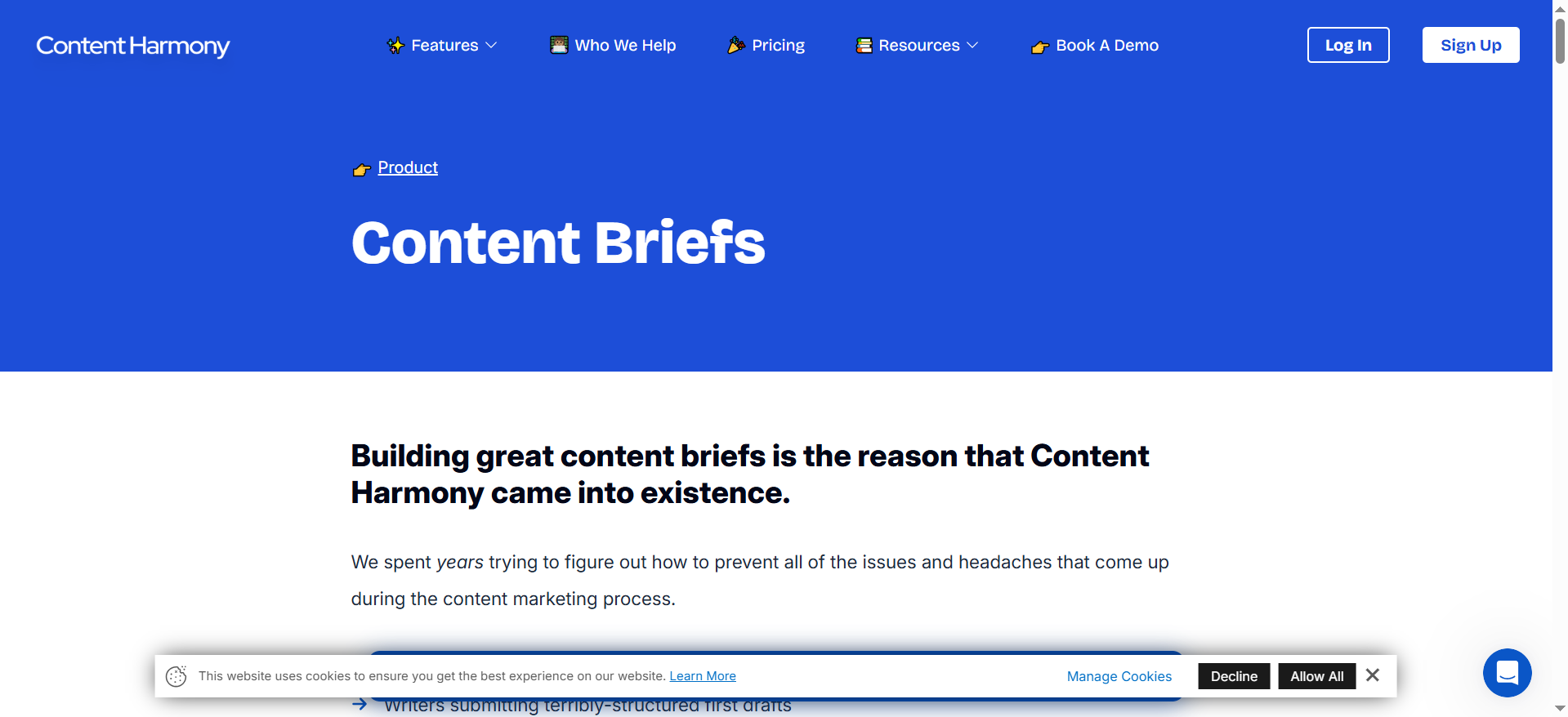
Content Harmony shines when you care most about clear, structured briefs your writers can execute without confusion. It’s built for collaboration: define the angle, audience, key questions, and competitive notes—then hand a tight brief to a writer and expect fewer revisions. Compared to MarketMuse, it tends to emphasize brief clarity over heavy analytics.
When to pick: You run an editorial team and want uniform briefs that scale.
Keep in mind: You may combine it with a separate tool for deeper audits.
Mini verdict: Ideal when brief quality and collaboration are the top priority.
6. Is Dashword a Simple, Budget-Friendly Pick?
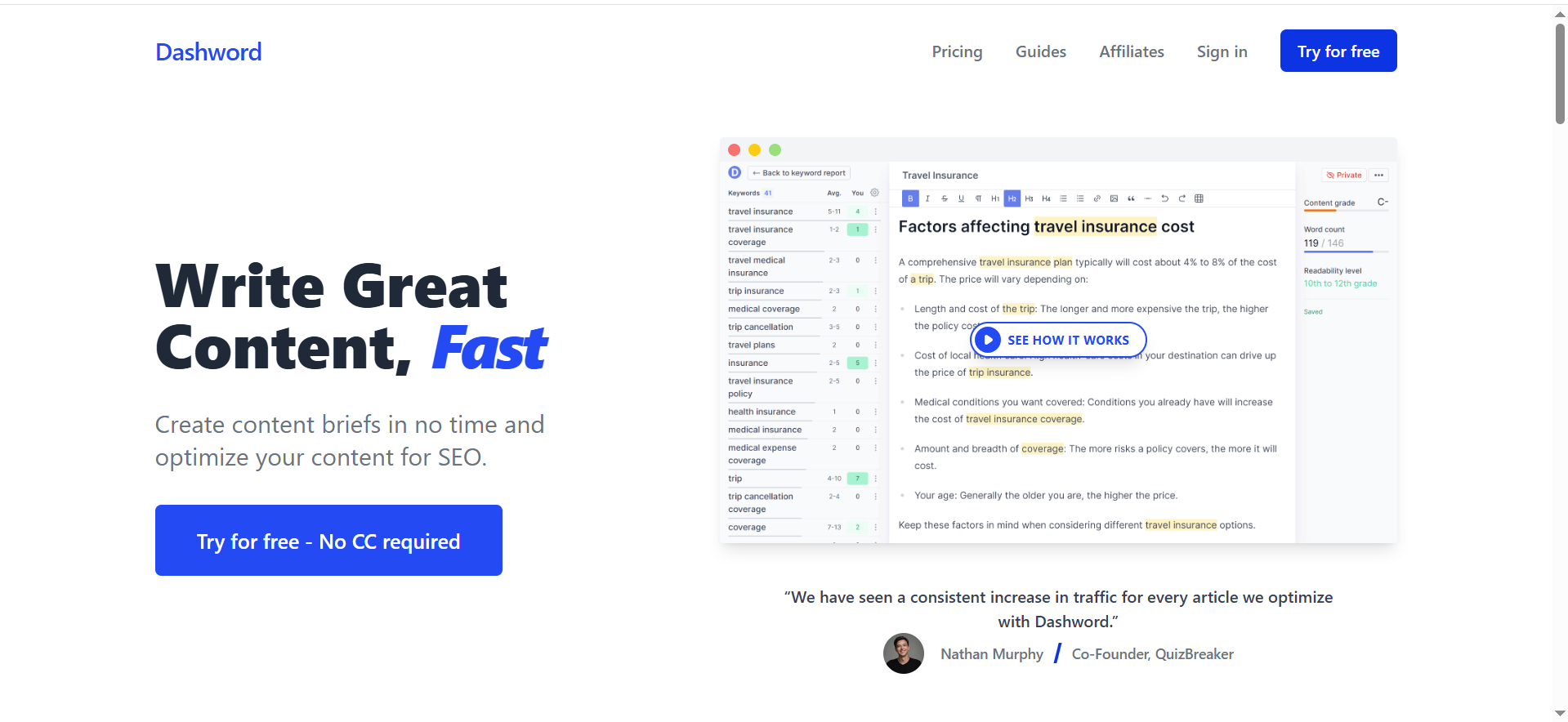
Dashword offers a straightforward editor with recommendations and a scoring system, making it a good entry-level choice for solo marketers and early teams. You’ll get the basics—keywords to include, headings guidance, and an overall quality target—without a steep learning curve. If MarketMuse feels like overkill for your current stage, Dashword can help you publish optimized content while keeping costs predictable.
When to pick: You need simple, affordable optimization with minimal onboarding.
Keep in mind: Fewer advanced strategy features; good for “get the job done” content.
Mini verdict: A practical starter for simple content programs.
7. How Does NeuronWriter Compare on Features vs. Price?
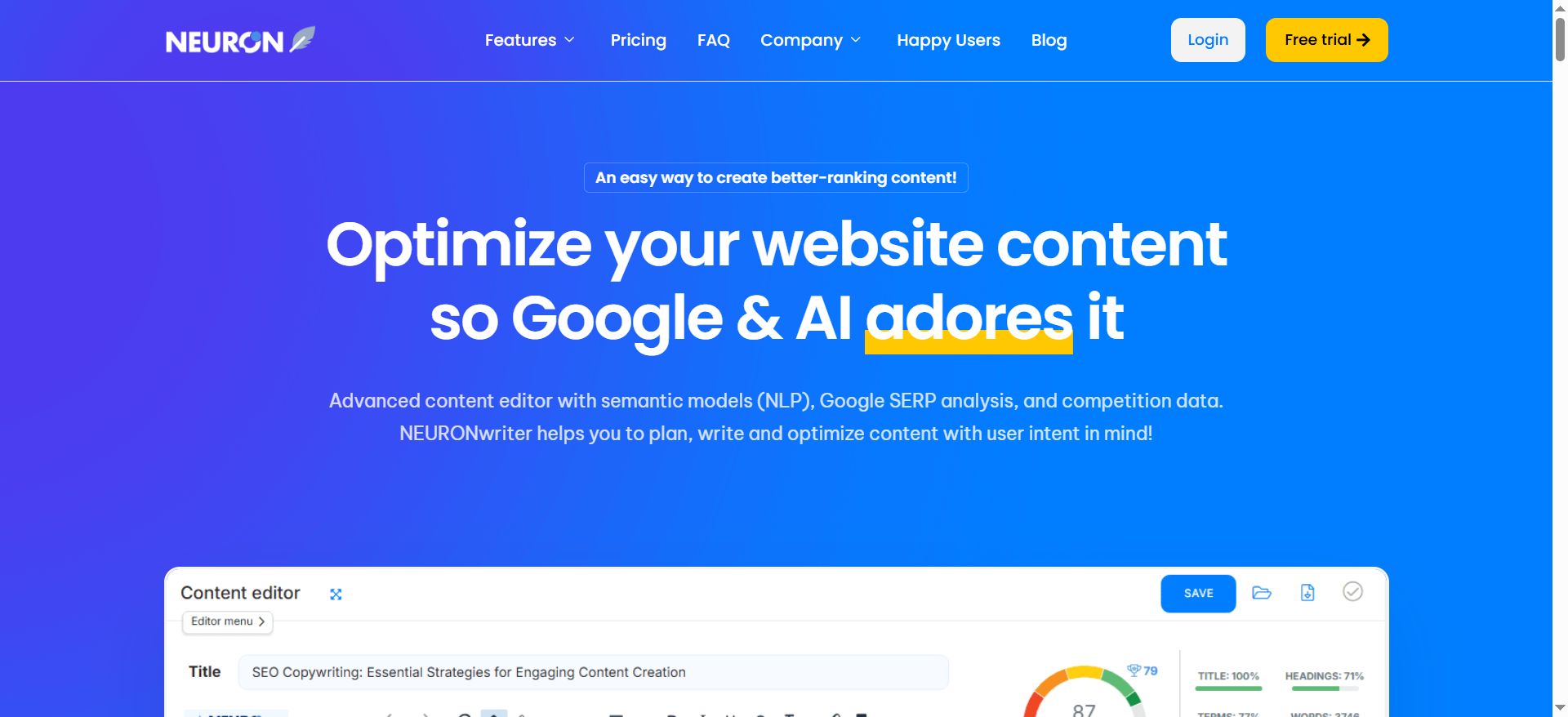
NeuronWriter packs SERP analysis and in-editor suggestions into an approachable tool that appeals to budget-sensitive teams. It’s a step up from bare-bones editors, with topical cues and competitor insights to steer your outline and draft. Versus MarketMuse, you trade some depth for value and speed.
When to pick: You want useful SERP cues and a capable editor without premium pricing.
Keep in mind: Validate recommendations and add internal expertise for EEAT.
Mini verdict: Good balance of features and cost for growing teams.
8. Does INK Replace Both Writing and Optimization?
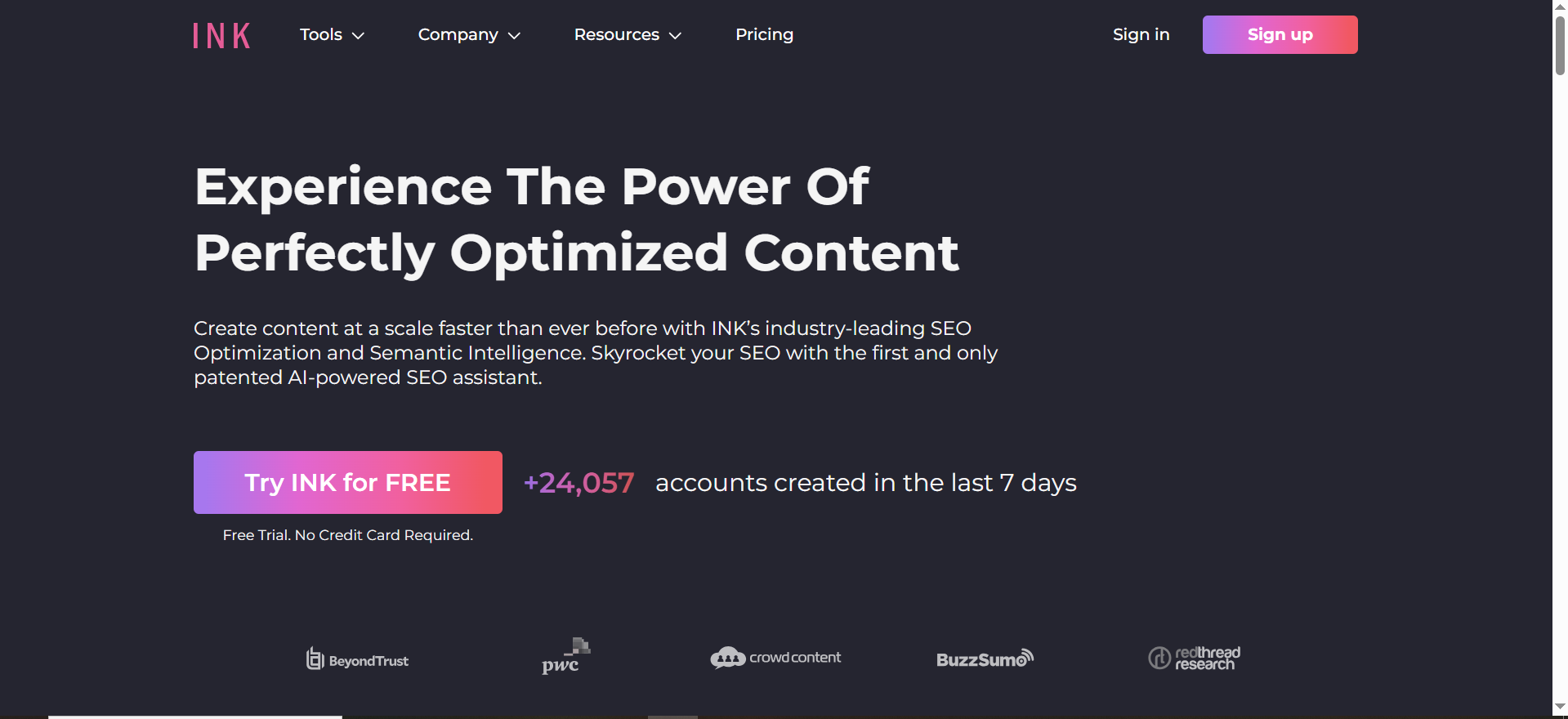
INK combines AI writing assistance with SEO optimization, aiming to reduce tool-sprawl. It’s designed for marketers who want an all-in-one drafting experience with guidance built in. Compared to MarketMuse, INK’s value is helping you draft faster while nudging toward on-page best practices.
When to pick: You want AI writing + optimization in one place.
Keep in mind: Guardrails matter—review AI outputs for accuracy and brand voice.
Mini verdict: A unified experience that cuts app-switching.
9. Can Semrush or Ahrefs Replace MarketMuse’s Content Tools?
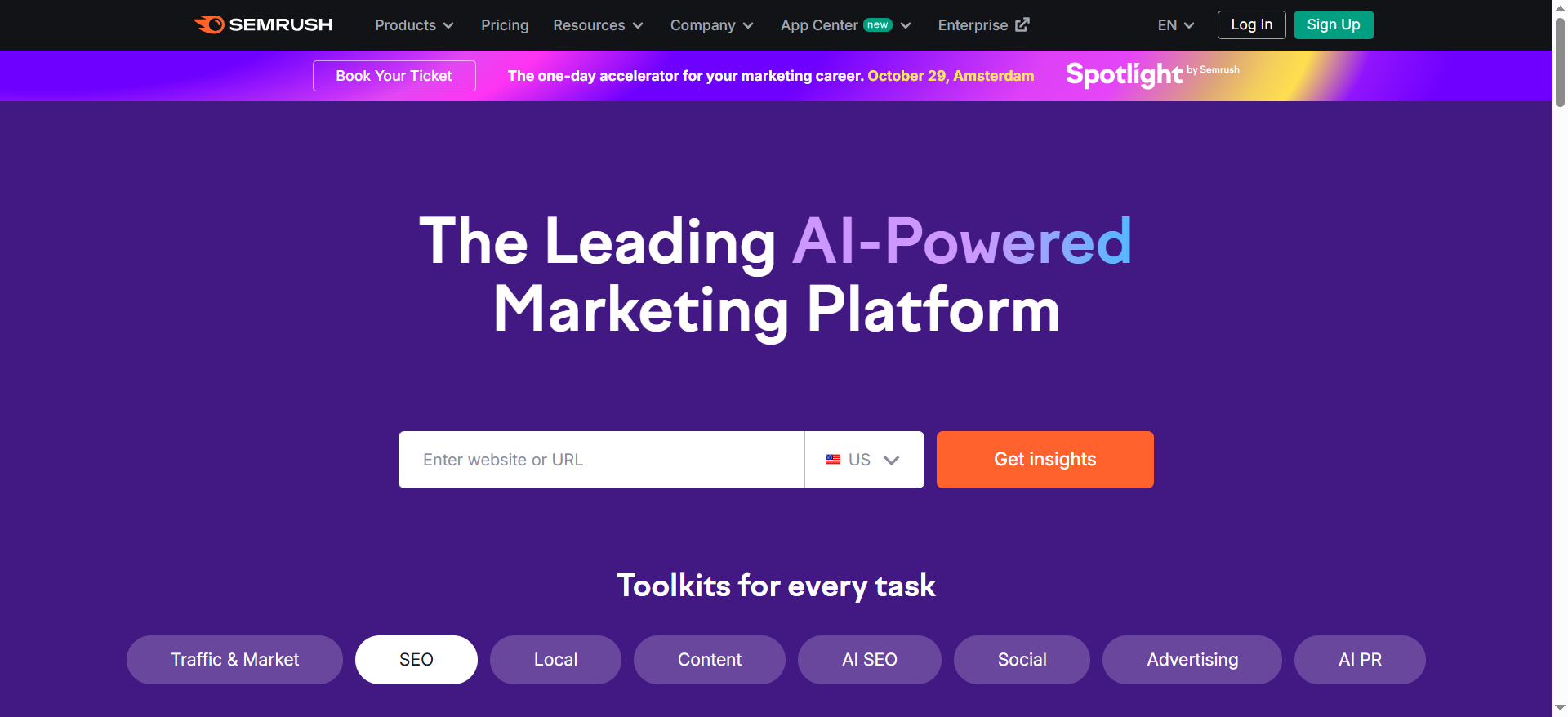
Semrush and Ahrefs are full SEO suites with content modules. If you want one platform for research, technical audits, backlinks, and on-page recommendations, they’re strong candidates. Compared to MarketMuse, they’re broader but sometimes less specialized in content brief depth.
When to pick: You prefer all-in-one SEO plus decent content optimization.
Keep in mind: If briefs are your priority, pair with a brief-first tool.
Mini verdict: Great backbone SEO tools; pair with a specialized editor for premium briefs.
Book a SaaS Content Audit — get a prioritized content roadmap in 7 days.
What Marketmuse Does, and Why Teams Consider Alternatives
MarketMuse helps content teams plan topics, generate briefs, and optimize drafts with suggestions and scoring. It’s powerful when you need depth: topic mapping, competitive coverage, and structured briefs that keep writers on track, yet teams comparing platforms often start with a landscape view like our guide to best Clearscope alternatives for how different optimizers handle briefs and scoring.
▶️ Cost: Pricing often scales with seats and credits. If your team grows or your publishing cadence increases, the monthly bill can jump. Use a B2B SaaS content audit checklist to identify quick wins that reduce tool dependence while you reassess spend.
▶️ Workflow fit: Some teams prefer a lighter editor or native drafting inside Google Docs/WordPress to avoid copy-paste and extra logins. When speed matters, a focused SaaS content audit & fix sprint can unblock publishing and improve what you already have without changing your team’s writing habitat.
Learning curve: Busy marketers want tools that feel intuitive on day one. If training time is limited, “clear and simple” usually wins.
💡 Several tools now deliver clear briefs, real-time scoring, and simple audits with shorter onboarding, see AI content audit software for pragmatic options your team can adopt fast.
How to Choose the Right Alternative (Checklist)
✅ Brief quality: Look for briefs that include suggested headings, questions to answer, and competitor cues your writers can follow without hand-holding.
✅ Real-time scoring: Live guidance inside the editor helps non-SEO writers improve as they draft, no separate audit needed later—see how a ROI-first SEO tool stack for SaaS balances on-page scoring with practical adoption.
✅ Audits & refresh: Built-in audits or “content decay” signals keep older posts earning. Prioritize tools that make updates easy, this how to do a content audit walkthrough shows the exact checkpoints to run before switching platforms.
✅ Integrations: Google Docs/WordPress plugins reduce friction and speed publishing. Bonus if it supports your DAM or project tool; our Google Docs SEO workflow explains how collaborative drafting, comments, and approvals slot into existing doc habits.
✅ Collaboration & seats: Ensure comments, reviewer notes, and permissions fit your team structure. Check costs for extra seats, this Hubstaff content strategy audit case breakdown shows how alignment across contributors translates into faster, higher-quality output.
✅ Pricing & limits: Compare starter vs. pro tiers, monthly credits, report caps, and overage fees so you don’t hit surprises mid-month.
🤙 Shortlist ready? Book a Discovery Call
Which Tool is Best For My Situation?
| Situation | Recommended tools | Why it fits |
|---|---|---|
| Agencies | Content Harmony or Outranking | Consistent briefs, reviewer notes, smooth multi-writer workflows. |
| In-house SaaS teams | Surfer or Clearscope | Clear guidance, fast adoption, predictable on-page quality. |
| Solo / tight budgets | Dashword or NeuronWriter | Quick setup, strong value, minimal complexity. |
| High-volume / programmatic | Surfer or Frase | Faster outlines and real-time scoring to keep velocity high. |
Migrating From MarketMuse Without Losing Momentum
Export Before Switching
Preserve the essentials so your team keeps context from day one on the new platform:
- Export content briefs, topic maps, notes on top-performing URLs, and audit findings — a quick content audit walkthrough keeps your exports structured so nothing critical gets lost.
- Save examples of “what good looks like” to guide writers; pair them with collaborative SEO content planning so comments, checklists, and approvals mirror your current doc flow.
- Keep your style guide and structure checklist handy so the new tool matches brand voice and format.
Run a Focused 30-Day Side-By-Side Test
Prove the new setup with a small, controlled experiment:
- Choose 3–5 existing URLs to refresh in the new tool plus 1–2 net-new posts.
- Track content-score lift, time-to-publish, and early traffic/clicks/conversions, AI-powered content auditing tools can automate snapshots so you compare like-for-like.
- Hold constants where possible “topic, writer, cadence” so any change reflects the tool, not other variables.
- Summarize results in a simple sheet and make the go/no-go decision by week 4.
Success Metrics That Matter
Judge the switch with metrics tied to outcomes, not just activity:
- Publish velocity and refresh cadence trending up.
- On-page quality scores improving during drafting and after updates.
- SERP features: snippet wins and AI Overview presence moving in the right direction for priority queries, our AI SEO audits framework shows what to log.
Business impact visible in demo sign-ups or audit requests attributed to the updated content.
Frequently Asked Questions
Yes, Dashword and NeuronWriter provide low-cost entry points with the essentials: term suggestions, headings, and a quality target. Use them to validate your process before upgrading. If you outgrow them, step up to Surfer or Clearscope for more robust guidance and collaboration.
If briefs are your top priority, try Content Harmony (clarity/collab) or Frase (fast AI-assisted outlines). Agencies often like Outranking for checklist-driven consistency. Pair with your editor’s checklist so briefs match brand voice.
Not always. Semrush/Ahrefs cover research/technical/backlinks; many teams add a brief-first editor for writing quality. If the budget is tight, start with one suite + one lightweight editor and upgrade as output scales.
Plan Keep/Prune/Refresh checks quarterly. Refresh pages that slip in rankings, lose clicks, or fall behind competitors. Use audit features or simple score checks to prioritize updates.
Yes, write self-contained answer blocks under query-driven H2/H3s, and ensure factual clarity. That structure increases your odds of AI retrieval and snippet presence.
Conclusion—Simple Picks to Move Forward Today
If MarketMuse isn’t the perfect fit, you’ve got strong, practical options. For quick setup and tight budgets, Dashword or NeuronWriter keep things simple without slowing you down. For in-house SaaS teams, Surfer or Clearscope provide clear guidance and predictable quality that scales across stakeholders. Agencies get the most leverage from Content Harmony or Outranking thanks to consistent briefs and multi-writer workflows, proof this works in practice: our Clockify SEO case study. If you prefer an all-in-one SEO backbone, Semrush or Ahrefs cover the wider stack “see our take on best enterprise SEO tools” then pair either with a brief-first editor when you need deeper content guidance.
Your next step is straightforward:
- pick the tool that matches your team and cadence,
- run a focused 30-day side-by-side test on a few URLs (or kick off a fast SaaS content fix to accelerate the refresh baseline), and
- ship with a simple refresh cadence so wins compound.
→ Prefer guidance? Hiring a content audit consultant
▶️ When you’re ready to move faster with less guesswork, book a SaaS Content Strategy Session with The Rank Masters → audit → roadmap → execution plan.





